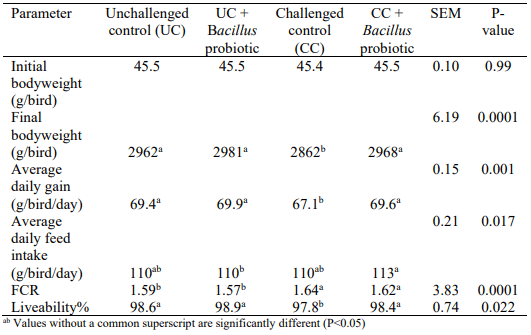I. Introduction
Phytase enzymes are commonly used in the pig and poultry feed industry mainly to increase the availability of phosphorus (P) from plant ingredients. Additionally, phytase improves the availability of other nutrients such as Ca, digestible amino acids (AA), and energy (Dersjant4Li et al. 2015a) by facilitating breakdown of phytate P and thus negating its anti-nutritional effects on nutrient digestibility. Combination of Phytase with NSP enzymes has proven to be an effective practical strategy to improve productivity, reducing feed cost, and improving efficiency (Amerah et al., 2017).
In practice, with proper application of phytase and NSP enzymes (dose levels and type of enzymes) and diet management, more sustainable poultry production can be achieved without using the finite inorganic P source, to improve Return on Investment (ROI) and increase sustainability. It is critical to understand the matrices and associated contribution values of combined enzymes for proper application of various levels of matrix values for minerals, energy and amino acid fractions. Many studies have demonstrated that using a reliable full matrix value including digestible AA and energy can maximize the cost benefit with increased ROI. However, a realistic matrix value should be linked to actual feed formulation and dietary characteristics.
The other important subject is reduction and/or elimination of Antibiotic Growth Promoters (AGP) and implementing preventative measures to control, eradicate, and improve recovery of birds under challenge conditions. Probiotics are gaining more attention in the animal industries due to market trends to reduce antibiotics use, whilst still preventing disease outbreaks and maintaining, or even improving, animal performance. Bacillus based probiotics have been shown to influence gastro-intestinal tract (GIT) microbial populations and reduce Avian Pathogenic E. coli counts in the GIT of broilers. Bacillus based probiotics have a number of different modes of action which include outcompeting non-beneficial bacteria, encouraging growth of beneficial bacteria and aiding development of the immune system (Ouwehand et al., 2010, Bento et al., 2013, Wealleans et al., 2017). Dersjant-Li et al. (2016) reported positive improvements in terms of inflammatory responses, enhancements of gut structure and bird performance in a challenge model study in broilers using an enzyme blend in combination with direct fed microbial containing three strains of Bacillus .
Multi-strain probiotics show positive impact on broiler performance in terms of feed conversion and improved body weight (Flores et al, 2016) and the combination with an appropriate enzyme mix (Syncra Concept) has proven to be a practical and efficacious strategy to improve overall performance of broilers (Dersjant-Li et al., 2015b). In this study, it was decided to investigate the effects of combinations of enzymes and probiotic.
II. Methods
A total of 480 one-day-old male Vencobb broiler chicks were allocated to 4 treatments with 10 replicate pens per treatment (12 birds/pen). All diets were mixed grain based (corn – wheat) and were fed ad libitum as crumble during the starter and grower phases (1- 28 days) and as pellets during the finisher phase (29-42 days). All diets included a Buttiauxella phytase (Axtra PHY®) at 1000 FTU/kg and a xylanase, amylase and protease combination (Axtra XAP®) dosed to provide 2000 U/kg xylanase, 200U/kg α-amylase and 4000 U/kg protease. Control diets were reduced by 0.199% Ca, 0.194% available P, 110 kcal energy and 0.704% CP according to the full matrix recommendations for the enzymes. The control diet was fed either unsupplemented, or supplemented with 150, 000 CFU/g feed of a 3 strain Bacillus DFM (Enviva PRO®) and were fed to unchallenged and challenged birds, giving four treatments. The unchallenged control diet contained Salinomycin. On day 4, challenged birds were administered with 10 times the recommended dose of a coccidiosis vaccine (Livacox Q). Bodyweight and feed intake were measured on days 1, 21 and 35 for the calculation of performance parameters. Statistical differences between treatments were determined using ANOVA and Tukey means separation (JMP, SAS software).
III. Results
Results of the study are presented in Table 1. The performance of the unchallenged control birds was in line with breed performance recommendations. Compared to the challenged control, average daily gain in body weight and the final body weight were improved (P < 0.05) by 3.7% when the three-strain-Bacillus probiotic was supplemented to the diet. Liveability was improved (P < 0.05) by 0.6% with the addition of the 3 strain bacillus compared to the challenged control and was maintained comparable to the unchallenged control.
Table 1 - Performance of challenged and unchallenged birds fed a diet supplemented with a 3 strain bacillus 1-42 days of age
IV. Discussion
The matrix downspec proved to be at proper levels resulting in numerical improvements in terms of final body weight and improved FCR in the unchallenged birds versus the breed specifications. This finding offers significant practical applications in terms of feed cost reduction, performance, efficiency improvements and sustainability. The combination of enzymes and probiotic proved to be beneficial as the birds showed recovery in FCR, significant improvements in average daily gain, and final body weight compared to challenged treatments.
The enteric challenge imposed in the study was robust enough to reduce the final BW and the 3 strain Bacillus alleviated the negative effects of enteric challenge to restore the BW to the level obtained with the unchallenged control group. The tendency to a difference between the unchallenged control and UC + Bacillus group can be explained by the fact that gut acting growth promoters could elicit their full potential only in presence of some enteric challenge. Nevertheless, there was almost a 20 g difference observed between the Unchallenged Control and UC Bacillus groups which, from a commercial point of view would tend to offset fixed costs and result in additional meat produced per cycle or flock.
The Bacillus spp. used in the study have been shown to positively influence the microbiome of broilers (Ouwehand et al., 2010, Bento et al., 2013, Wealleans et al., 2017) by supporting beneficial microbial populations (e.g. lactic acid bacteria) and reducing potentially non-beneficial populations (e.g. E. coli and C. perfringens). There is some evidence the Bacillus strains can support the development of the avian immune system, making them better equipped to deal with intestinal challenges. Such modes of action could explain the positive performance effects noted in the current study, although these measurements were not taken directly. This is not the first time these additives have been documented to have a beneficial effect in challenge studies. Dersjant-Li et al. (2016) reported reductions in inflammatory responses, improvements in gut structure and a maintenance of bird performance to that of the UC in a coccidiosis/necrotic enteritis study.
Analysis of serum glucose (data not shown) revealed a faster glucose clearance 2 h postprandial in the Bacillus probiotic supplemented groups compared with that in the unchallenged control group suggesting a greater metabolic demand of nutrients like glucose due to supplementation of the Bacillus probiotic which can further be explained by greater nutrient turnover rates at the tissue level. This perhaps explains the better BW of the Bacillus probiotic supplemented groups despite induction of enteric challenge.
The inferior FCR in the challenged group and the apparent inability of the Bacillus probiotic to sustain the FCR is intriguing. Plausibly, the birds ate to meet their target BW defined by their genetic potential and they failed to achieve that when the challenge was induced. The higher feed intake of the CC+ Probiotic group, as compared to the UC+ Probiotic group may be explained by an attempt made by the birds to compensate for the depressed BW. When the Bacillus probiotic was supplemented, availability of nutrients at the tissue level ought to increase but that was perhaps not sufficient to maintain the BW and hence feed intake increased which in turn negatively affected the FCR.
It was concluded from the experiment that supplementation of a 3 strain Bacillus probiotic improved BW and tended to improve feed conversion ratio in broiler chickens and it was possible to sustain performance following exposure to enteric challenges in the form of mixed Eimeria infection, an extremely common phenomenon in practical broiler farming systems.
Presented at the 33th Annual Australian Poultry Science Symposium 2022. For information on the next edition, click here. 











00167-168.jpg&w=3840&q=75)